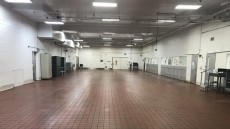利樂包使用強,薄聚合物包
薄聚合物對液體產品的包裝,有前途的企業
它將幫助他們降低成本,達到回收標準。
樹脂成本不斷上升,石油材料用於聚合物包裝生產,隨著能源價格上漲,已經切成食品加工商在過去一年的利潤。他們從歐盟監管機構也麵臨越來越大的壓力來滿足歐盟的新包裝回收目標。利樂包的新包裝,貼上“寬”,開發環境和roll-fed冷卻液體產品包。新材料有一個更強大和更可靠的內塗層比標準的包裝格式目前生產利樂包的工廠,該公司表示。即使它是強大的,它是30%的稀釋劑和需要更少的聚合物生產、利樂包在一份新聞稿中說。利樂包估計,一旦所有的工廠轉換為今年3月新標準,它將能夠削減其聚合物的消費50000噸,相當於每年大約2500個集裝箱。“這不僅減少不可再生資源的使用,它也有一個直接的和積極的對環境的影響而言,航運、分布和能源使用,”該公司表示。寬減少了能源消耗17%,通過使用更少的聚合物,包中使用可再生紙板的比例增加了3.5%,該公司聲稱。公司一直在測試包裝的澳大利亞、巴西和日本,說阿甘Lanzinger解釋道,利樂包的項目主管環境箱單元。“我們已經產生了全球超過500億包與澳大利亞、巴西和日本領先的製造商和零售商的方式報告更好的產品性能和操作更劃算,”他說。 "For instance, a transportation damage test in Brazil showed zero defects out of 9,000 packages transported on rough roads for 1,200 kilometres." By March, the new packaging material will be the de facto standard for carton packages and all Tetra Pak factories around the world will be using it, the comapny stated. Günther Lanzinger, programme director for Tetra Pak ambient carton unit told FoodProductionDaily.com that the new technology will be used for all packages with the exceptions of gable top ones and very limited, special applications. "All-in-all more that 90 per cent of Tetra Pak packages will be converted," he said. Worldwide, Tetra Pak has 53 production plants producing packaging material covering 165 countries. The company producers about 500,000 tonnes of packaging material per year.





